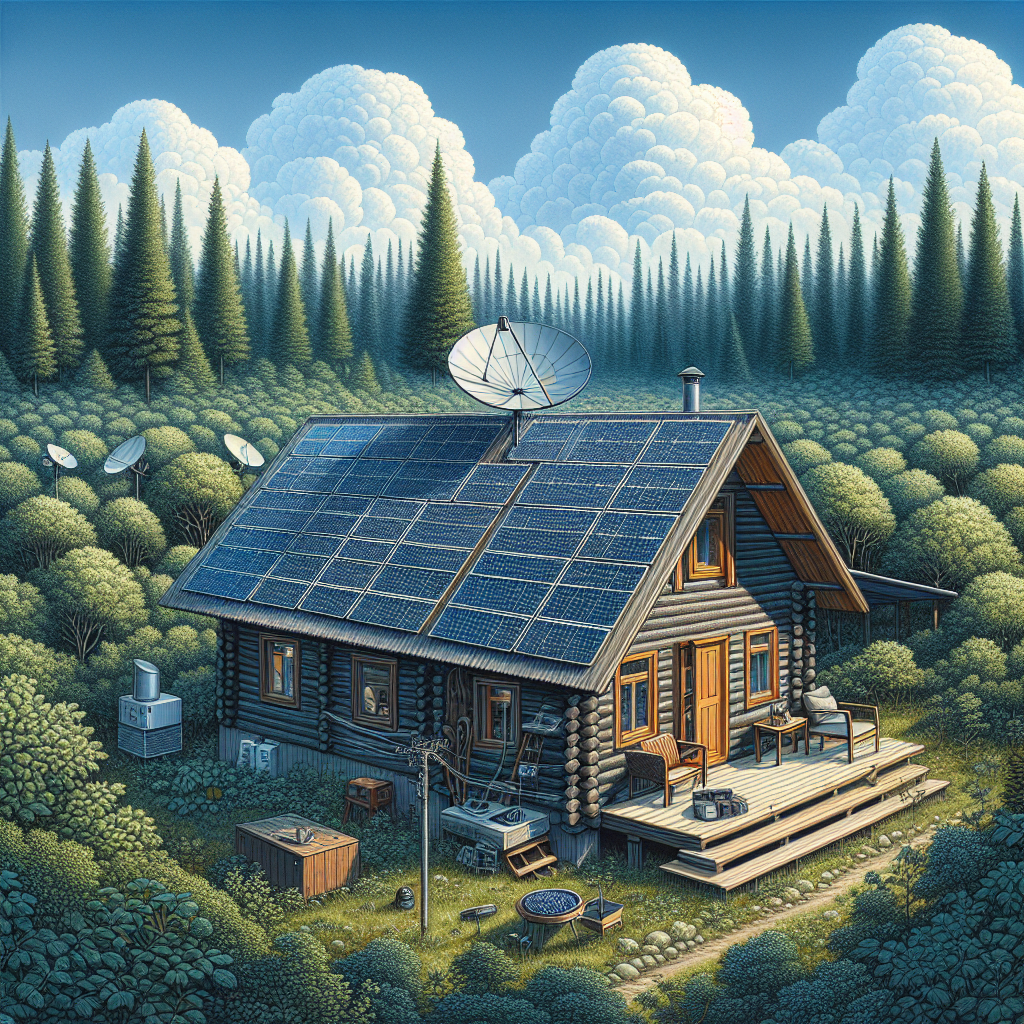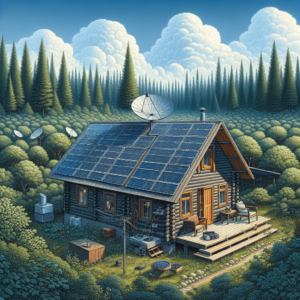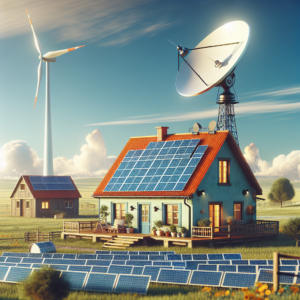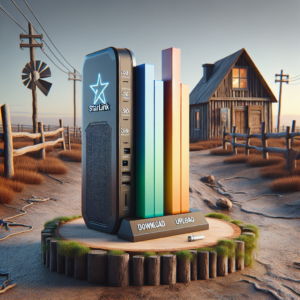
Choosing Your Solar Path: Off-Grid or Grid-Tied?
When you’re ready to harness the power of the sun, the first big decision is whether to go off-grid or stay connected with a grid-tied system. Both have their perks and quirks, and the best choice depends on your lifestyle, location, and values. Let’s explore these options so you can light up your life the way that suits you best.
Understanding Your Solar Power System Options
Think of your solar power system as the heart of your home’s energy. Grid-tied systems are like a shared heartbeat, connected and synchronized with the community’s energy grid. Off-grid systems, on the other hand, let your home beat to its own rhythm, independent and self-sufficient. Each system has its own setup, equipment, and benefits that we’ll get into, so you can make an informed decision.
Diving Into the Basics Before Choosing
Before we jump into the nitty-gritty, let’s get a clear picture of what we’re talking about. Grid-tied solar systems are connected to the public electricity grid and can feed excess power back into it. Off-grid systems are standalone setups that operate independently from the utility grid. Your choice will impact not just your electric bill, but also your impact on the environment and your way of living.
Shining a Light on Off-Grid Solar Systems

Off-grid solar systems are like the rugged individualists of the energy world. They don’t rely on the utility grid to keep the lights on. Instead, they use batteries to store the sun’s energy for when it’s needed. It’s a path less taken, but for those who walk it, the rewards can be substantial.
The Independence Factor
Choosing off-grid solar means saying goodbye to power outages and rate hikes from utility companies. You’re the master of your own energy domain, producing and storing all the electricity your home needs. This independence can be liberating, especially in remote areas where the grid doesn’t reach, or for those who prefer to be self-reliant.
Cost Implications and Upfront Investment
Freedom isn’t free, and off-grid systems often come with a higher upfront cost. You’re not just buying solar panels; you’re also investing in batteries, charge controllers, and sometimes a backup generator. But don’t let sticker shock deter you. Over time, the investment can pay off, and the sense of energy independence is priceless.
Considerations for Energy Storage
Energy storage is the cornerstone of an off-grid system. Without the grid to fall back on, you’ll need a reliable way to store the energy your panels produce. This usually means batteries, and lots of them. They’ll need to be sized correctly for your energy needs and replaced every so often, so factor that into your plans.
Managing Maintenance and Sustainability
Off-grid systems require a bit more TLC than their grid-tied counterparts. You’ll need to keep an eye on your batteries, ensure your panels are clean and efficient, and sometimes troubleshoot the system. But for many, this hands-on approach is part of the appeal. It’s all about taking control of your energy and living sustainably.
Plug Into the Benefits of Grid-Tied Systems
Grid-tied solar systems are the popular kids on the block, and for good reason. They’re connected to the public electricity grid, which means they come with some perks that off-grid systems can’t match. Let’s shine some light on the benefits of staying on the grid.
Lower Initial Costs and Incentives
One of the brightest spots of a grid-tied system is the lower upfront cost. Without the need for batteries or backup generators, the initial investment is typically much less. Plus, you might be eligible for government incentives, tax breaks, and rebates that can significantly reduce the cost of installation. It’s like the grid is rolling out the welcome mat for your solar journey.
Net Metering and Financial Returns
With grid-tied systems, you can often take advantage of net metering. This means that when your panels produce more electricity than you need, you can send the excess back to the grid in exchange for credits. Then, when your system isn’t producing enough, you can use those credits to draw power from the grid. It’s a give-and-take relationship that can lead to some nice financial returns.
- Excess energy can be sold back to the utility company.
- Reduces or eliminates your electric bill.
- Potential to earn money if you produce more than you consume.
- Utilizes the grid as a virtual battery, saving on storage costs.
- Increases the efficiency of the overall power system.
The Convenience of Grid Dependency
Being tied to the grid means you have a constant, reliable source of power. There’s no need to worry about whether your batteries have enough charge or if a stretch of cloudy days will leave you in the dark. The grid is like a reliable friend who’s there when you need them, ensuring you always have the energy you need.
Off-Grid Solar Drawbacks to Consider
While off-grid living has its allure, it’s not without its challenges. It’s important to be aware of the potential drawbacks so you can plan accordingly and ensure that your solar dream doesn’t become a cloudy day.
Scaling the Energy Production Hill
One of the hurdles for off-grid systems is ensuring you have enough power. You’ll need to accurately calculate your energy needs and ensure your system is up to the task. This often means installing more panels and batteries than you might initially expect, which can increase costs and complexity.
Navigating the Energy Storage Challenge
Batteries are the backbone of off-grid systems, but they can be finicky. They require maintenance, have a finite lifespan, and need to be disposed of properly at the end of their life. Plus, they’re not cheap. You’ll need to be prepared for the ongoing costs and responsibilities that come with being your own mini power plant.
Financial Commitment and Payback Periods
Going off-grid is a commitment, not just to a lifestyle but also financially. The upfront costs can be substantial, and it might take years to break even through saved utility bills. It’s a long-term investment in your independence, and while the payback period can be lengthy, the reward is a life free from the ties of the grid.
Considering the Cons of Grid-Tied Solar

Grid-tied solar systems are not without their drawbacks. While they offer convenience and cost-effectiveness, there are a few clouds that can cast shadows on their sunny disposition. Let’s consider some of the less-talked-about aspects of being connected to the grid.
Vulnerabilities to Power Outages
Despite being equipped with solar panels, grid-tied systems often shut down during power outages for safety reasons. This means that during a blackout, even with the sun shining bright, your home could be without power just like everyone else’s. It’s a surprising twist for many new solar adopters, but one that’s important to understand.
Dealing with Grid Reliability and Policy Changes
The grid is not infallible. It’s subject to wear, tear, and the whims of weather and policy changes. Utility rates can fluctuate, and grid infrastructure can become outdated or damaged, leading to more frequent outages. Additionally, changes in energy policy can affect net metering benefits and other incentives, potentially impacting the financial benefits of your grid-tied system.
Limited Energy Autonomy
With a grid-tied system, you’re part of a larger energy ecosystem. This means that your energy autonomy is limited—you’re still dependent on the health and policies of the grid at large. For those seeking true energy independence, this connection can feel like a silver chain: shiny and valuable, but still a chain.
Solar Showdown: Comparing Off-Grid and Grid-Tied Side by Side
Now that we’ve illuminated the characteristics of both off-grid and grid-tied solar systems, it’s time to put them head-to-head. By comparing them side by side, we can see which might shine brighter for your specific situation.
Contrasting Independence with Convenience
Off-grid solar offers independence and self-reliance, while grid-tied systems offer convenience and ease of use. If you’re someone who values autonomy over all else and is prepared for the responsibilities that come with it, off-grid may be your path. However, if you prioritize a seamless integration into your current lifestyle, grid-tied could be the way to go.
Comparing Long-Term Costs and Savings
Off-grid systems often have a higher initial cost but can lead to greater savings over time, especially if you’re in a remote location where grid electricity is more expensive. Grid-tied systems have lower upfront costs, and savings can be immediate with net metering. However, you’re still subject to utility rate increases and changes in policy.
Assessing System Size and Scalability
When it comes to scalability, grid-tied systems can be more flexible. You can start with a smaller system and expand as needed. Off-grid systems require careful planning to ensure you have enough capacity from the start, which can mean a larger initial investment. Both systems can be scaled, but the approach and costs will differ.
Balancing Environmental Impact with Practicality
When we talk solar, we’re not just talking savings—we’re talking planet savings. Off-grid systems shine with their minimal environmental footprint, as they encourage energy responsibility and reduce reliance on fossil fuels. However, they may require more resources upfront, such as batteries. Grid-tied systems, while more resource-efficient upfront, still indirectly support the traditional energy grid, which may not be fully green. It’s about finding the balance that aligns with your eco-values and practical needs.
Empowering Your Decision: Which Solar Suits You Best?
Your journey to solar empowerment is personal. It’s shaped by where you live, your lifestyle, and your commitment to sustainability. Whether you choose the independence of off-grid living or the convenience of a grid-tied system, your decision is a powerful step towards a more sustainable future. Let’s explore which path might light the way for you.
Off-Grid for Remote Resiliency
If you’re nestled in the countryside or far from the nearest power line, off-grid solar is your beacon of self-reliance. It’s perfect for those who want to ensure power in remote locations, where the cost of connecting to the grid can be exorbitant. Off-grid systems provide the resiliency needed to weather any storm, figuratively and literally, and keep your homestead powered year-round.
Grid-Tied for Urban Efficiency
For city dwellers and suburbanites, grid-tied solar systems offer a seamless integration with your existing lifestyle. They’re efficient, less costly to install, and can even earn you some money back. Plus, with the grid as a backup, you never have to worry about running out of power, making it a practical choice for the urban environment.
A Personalized Approach to Solar Power
Your solar solution should be as unique as you are. Whether you’re a tech-savvy eco-warrior or a family looking to cut down on bills, there’s a solar setup out there that fits like a glove. Don’t be afraid to ask questions, crunch numbers, and dream big—your perfect solar power system is within reach.
Key Takeaways: Solar Solutions for Self-Sufficiency
- Off-grid solar provides independence and is ideal for remote locations.
- Grid-tied solar is cost-effective and convenient for those close to the grid.
- Both systems have environmental benefits, but the best choice depends on your personal values and situation.
- Energy storage is a crucial factor for off-grid systems, while grid-tied systems can take advantage of net metering.
- Making the switch to solar is a powerful move towards a sustainable future, no matter which path you choose.
Frequently Asked Questions
Can I switch from a grid-tied to an off-grid solar system?
Yes, it’s possible to switch from a grid-tied to an off-grid solar system, but it’s a big step that requires careful planning. You’ll need to consider the cost of additional equipment, like batteries and a backup generator, and ensure your system can meet your energy needs. But for those craving energy independence, the transition can be a liberating leap towards self-sufficiency.
What happens during a blackout with a grid-tied solar system?
It might come as a surprise, but during a blackout, most grid-tied solar systems will shut down. This is a safety feature designed to protect utility workers from electric shock while they’re repairing the grid. So, even though your panels are still soaking up the sun, you won’t be able to use that energy until the grid is back up and running.
How much maintenance does an off-grid system require?
Living off-grid means taking the reins on your home’s energy, and that includes maintenance. You’ll need to regularly check and clean your solar panels, monitor your battery levels, and ensure all connections are secure. It’s not a full-time job, but it is a regular commitment. The good news is, with proper care, your off-grid system can run smoothly for years.
Do I need special permits for off-grid solar installation?
Permits are a part of life, and off-grid solar installations are no exception. While the specifics can vary by location, you’ll generally need to secure a building permit and pass an electrical inspection. Some areas may have additional requirements, especially if you’re in a remote location. It’s best to check with your local authorities to know exactly what you need before you get started.
How does weather affect off-grid vs. grid-tied solar systems?
Weather plays a role in the performance of all solar systems, but its impact varies between off-grid and grid-tied setups. Off-grid systems rely solely on the sun, so a stretch of cloudy days can lead to energy shortages. Grid-tied systems have the grid as a backup, so they’re less vulnerable to weather fluctuations. However, extreme weather can cause grid outages, which would affect grid-tied systems while off-grid setups would continue to operate.
In conclusion, choosing between off-grid and grid-tied solar power is a significant decision that hinges on your personal circumstances, values, and goals. Off-grid systems offer unparalleled independence and self-reliance, perfect for those in remote areas or who wish to disconnect from the utility grid. On the other hand, grid-tied systems provide convenience, lower upfront costs, and the ability to sell excess power back to the grid, making them ideal for those in urban settings or who prefer a more hands-off approach.
Regardless of the path you choose, transitioning to solar power is a commendable step towards a more sustainable and self-sufficient lifestyle. It’s about taking control of your energy needs, reducing your carbon footprint, and investing in the future of our planet. As solar technology continues to advance, the possibilities for both off-grid and grid-tied systems will only grow, making now an exciting time to embark on your solar journey.
Remember, the sun provides enough energy in just one hour to power our planet for a year. Harnessing that power puts you at the forefront of a clean energy revolution. Whether you’re soaking up the sun off-grid or syncing with the grid, you’re part of a brighter, greener future. So, charge ahead, make your choice, and let the sun shine on your solar-powered dreams.







